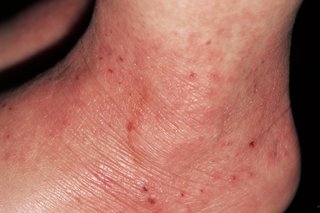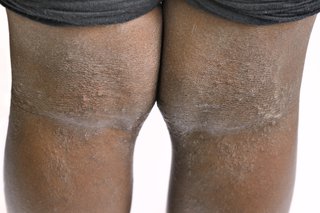There are usually periods where the symptoms improve, followed by periods where they get worse (flare-ups). Flare-ups may occur as often as two or three times a month.
Atopic eczema can occur all over the body, but is most common on the hands (especially fingers), the insides of the elbows or backs of the knees, and the face and scalp in children.

Credit: DR P. MARAZZI/SCIENCE PHOTO LIBRARY

Credit: SCIENCE PHOTO LIBRARY
Scratching can disrupt your sleep, make your skin bleed, and cause secondary infections. It can also make itching worse, and a cycle of itching and regular scratching may develop. This can lead to sleepless nights and difficulty concentrating at school or work.
Areas of skin affected by eczema may also turn temporarily darker or lighter after the condition has improved. This is more noticeable in people with darker skin. It's not a result of scarring or a side effect of steroid creams, but more of a "footprint" of old inflammation and eventually returns to its normal colour.
Signs of an infection
Occasionally, areas of skin affected by atopic eczema can become infected. Signs of an infection can include:- your eczema getting a lot worse
- fluid oozing from the skin
- a yellow crust on the skin surface or small yellowish-white spots appearing in the eczema
- the skin becoming swollen and sore
- a high temperature (fever) and generally feeling unwell
Read more about infections and other complications of atopic eczema.